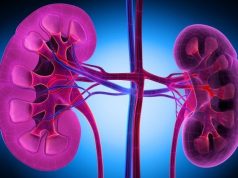Significant improvement in mean visual acuity seen within 24 hours of treatment; clinically significant improvement occurred in 66 percent
By Elana Gotkine HealthDay Reporter
WEDNESDAY, Feb. 21, 2024 (HealthDay News) — A novel protocol can be used to diagnose eye stroke and expedite treatment, according to a study published online Feb. 13 in Ophthalmology.
Gareth M.C. Lema, M.D., Ph.D., from the Icahn School of Medicine at Mount Sinai in New York City, and colleagues conducted a retrospective case series in adults who presented with painless monocular vision loss and were diagnosed with non-arteritic retinal artery occlusion. Optical coherence tomography (OCT) machines were placed in the stroke center or emergency department at three hospitals. Patients were evaluated by the stroke neurology service and underwent OCT; the images were interpreted remotely. Intra-arterial tissue plasminogen activator (IA-tPA) treatment was provided to eligible patients.
Fifty-nine patients were evaluated in the first 18 months since the protocol went live. Based on OCT and follow-up examination, the researchers found that 42 percent of patients had a confirmed retinal artery occlusion. Ten patients were eligible for treatment, and nine received IA-tPA. Within 24 hours after treatment, there was a significant improvement in mean visual acuity from LogMAR 2.14 to LogMAR 0.7; after four weeks, LogMAR was 1.04. Sixty-six percent of patients had clinically significant improvement within 24 hours, which was maintained through one month in 56 percent of treated patients. The mean time to treatment was 543 minutes from last known well and 146 minutes from presentation at the stroke center.
“We reported a novel protocol for the diagnosis of eye strokes that not only can save vision for these patients, but also demonstrates the potential to use remote consultation for time-sensitive ophthalmic emergencies,” Lema said in a statement.
Abstract/Full Text (subscription or payment may be required)
Copyright © 2024 HealthDay. All rights reserved.








